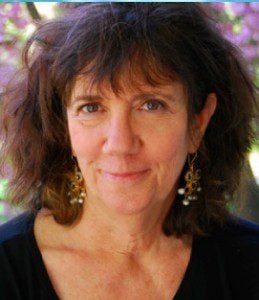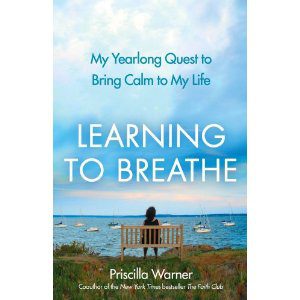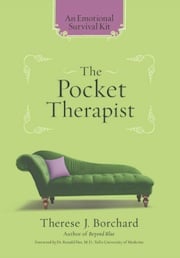 This is a true story. I met Priscilla Warner online much like a chick meets a dude. We were instant friends. It helped that we had a similar sense of humor. Surprisingly, I think … to both of us, the friendship stuck. Even though the bonds formed quickly, they were authentic, and we still email and speak to each other as often as two very busy women can.
This is a true story. I met Priscilla Warner online much like a chick meets a dude. We were instant friends. It helped that we had a similar sense of humor. Surprisingly, I think … to both of us, the friendship stuck. Even though the bonds formed quickly, they were authentic, and we still email and speak to each other as often as two very busy women can.
She told me about her book project at inception, and I was fascinated. She was going to try to turn her panic-prone brain into that of a Buddhist monk. “Good luck with that one,” I told her and waited to hear how she would do in those meditation classes … fully expecting her to flunk out.
But the woman persevered, through about 100 different types of alternative therapies and remedies, and a year later—after a good brain scan—saw that she had lobes that looked liked monks, or something like that.
At any rate, her book went on sale two days ago and she is on the Today Show tomorrow (Sept. 23).
I thought I’d feature this interview of her courtesy of her publisher.
You can learn more about Priscilla at her website or by visiting her new blog on Psychology Today.
Q: What prompted you to write this book?
A: I was desperate to be calm!
Three years ago, I was happily married, the mother of two wonderful sons, and successfully engaged in the world. But a part of me felt broken and damaged, because of a panic disorder that I’d battled from the time I was fifteen. I was exhausted from traveling to forty cities on an extended book tour. As corny as it sounds, I wanted to find inner peace.

For years, I’d read about neuroscientists studying Tibetan monks who meditated so effectively that their pre-frontal cortexes lit up on MRIs. “I want the brain of a monk!” I decided while reading yet another magazine story about them, sitting on an airplane about to take off from Tulsa, Oklahoma. I’d popped a Klonopin to deal with my fear of flying, but I wondered: If I taught myself how to meditate, could I meditate my way from panic to peace?
I flew home, and researched all the teachers, treatments and techniques that appealed to me. I wrote a book proposal, thinking that if I chronicled all of my adventures, I’d be motivated in addition to being medicated.
And then came the hard part…I had to learn how to sit still.
Q: When you began this book, your goal was to meditate your way from panic to peace and to actually change your brain to resemble that of a Buddhist monk’s. How did you do?
A: I did very well!
Inside, I feel calmer, more peaceful, and happier.
Friends who have known me for decades say that I’m grounded, and that I
seem uninterested in escalating emotions to the point where they become
counter-productive. One friend remarked that the whole “vibe” in my house has
changed, that everything and everyone is more “mellow.”
My husband of thirty years says that my anger is, for the most part, gone.
When asked “Is Priscilla mellow?” he says that I’m 99% mellow.
A renowned neuroscientist agrees with my husband. Dr. Andrew Newberg took scans of my brain, had me practice lovingkindness meditation for eight weeks, and then scanned it again. “If you want the brain of a monk, you’re headed in the right direction,” he told me when the results were in. He noted increased blood flow to certain parts of my brain and changes where the monks’ brains had changed – in my thalamus and frontal lobe – while I was meditating. My brain had learned to light itself up, at least in my mind.
My mother is in her 11th year of Alzheimers disease. I have been able to forgive her for what I missed in our relationship, and I am less attached to a particular outcome every time I visit her. I am still sad to see her fading. I long for her, and I worry about what will come next, but I am not experiencing the anguish I used to feel.
I still worry about the safety and well-being of my husband, sons, and the people I love, but my heart has expanded to include the whole world (in my most enlightened moments) and that’s just too much to worry about in an obsessive way. I’m a speck in the universe, and I like it that way. I don’t feel powerless, I feel connected to the cosmos (and some of the far-out teachers and meditators of the past!) I feel a sense of humility, along with a powerful connection to the world.
Q: What did you learn about yourself when you began to meditate?
A: I learned that I’m strong. That I have inner resources I didn’t know I had.
That I won’t crumble if I allow feelings that had terrified me for so long to be
present.
When you sit still, everything in life slows down. I have much more patience than I ever thought I had. I am now able to let feelings pass through me, subside, fall away, or resolve themselves.
I was surprised to discover that I’m a disciplined person. Since this experiment began, I have meditated every single day (forgetting just once.) When I care about something passionately – like helping my body, brain and soul to heal – I have the inner resources, strength and resolve to take action. That’s wonderful to know.
Q: What advice can you give to those suffering from panic attacks?
A: Do not despair. There are so many ways to heal, so many excellent
techniques, treatments, teachers and therapists.
Do not be ashamed. 6 million Americans suffer from panic attacks.
Do not compare yourself to others. We all come into this world with different constitutions, brains, hearts, bodies and central nervous systems. One person’s exciting event is another person’s worst fear. Even with my new brain, I think it’s safe to say that I will never jump out of an airplane.
Q: What do want readers to take away from your book?
A: I want people to know that they can heal in ways they never thought
possible. That they can turn pain into understanding and growth. That they can
survive.
We all die. We all suffer. But we can choose the path we take through that suffering. That path will twist and turn in ways we can never expect. But if we put one foot in front of the other, and approach life one step at a time, one breath at a time, we can move from a painful place to a productive one. We can accept sadness and feel grace. We can find teachers, therapists, techniques, experiences and resources that don’t have to cost a fortune, but that can make a huge difference in our lives.

